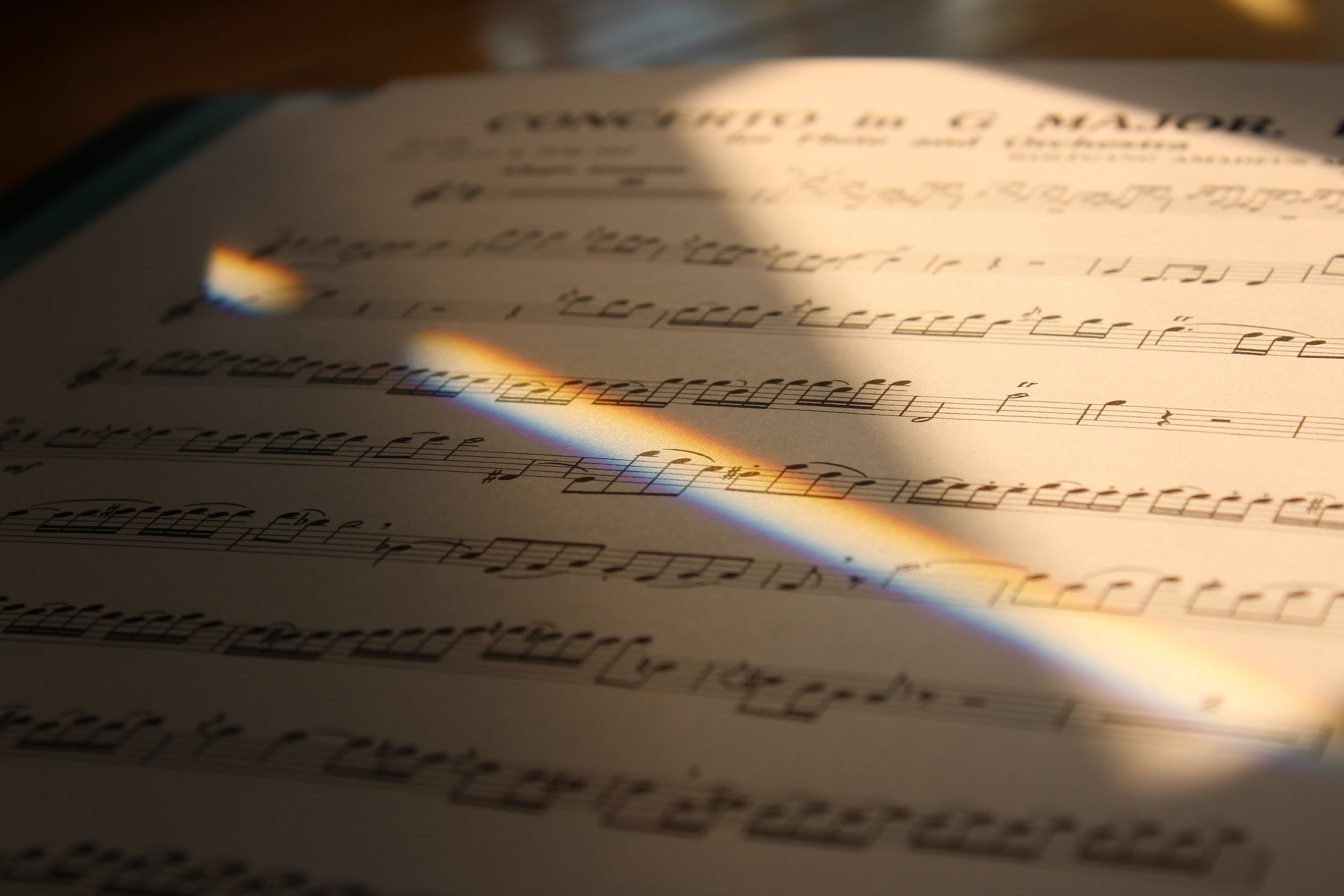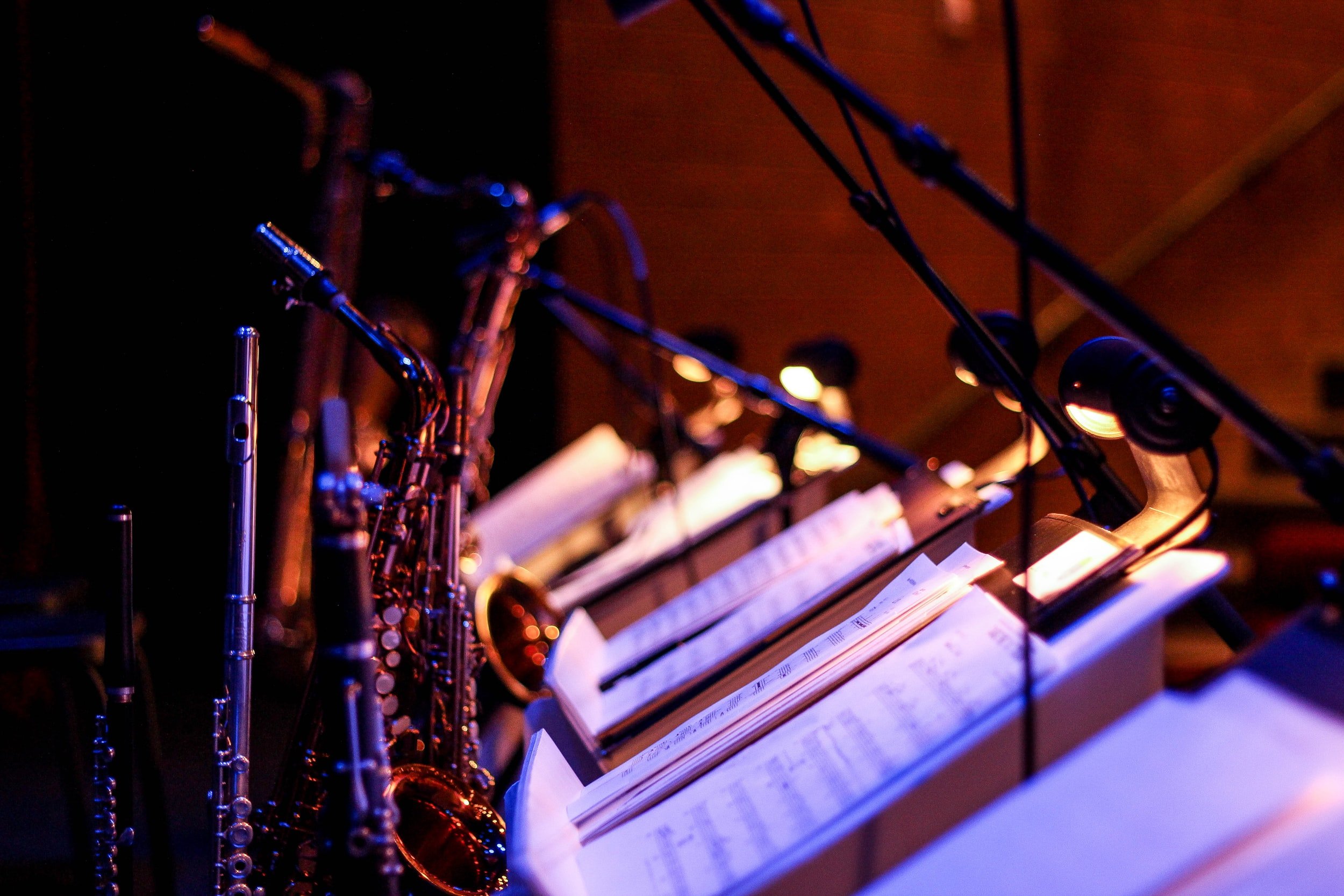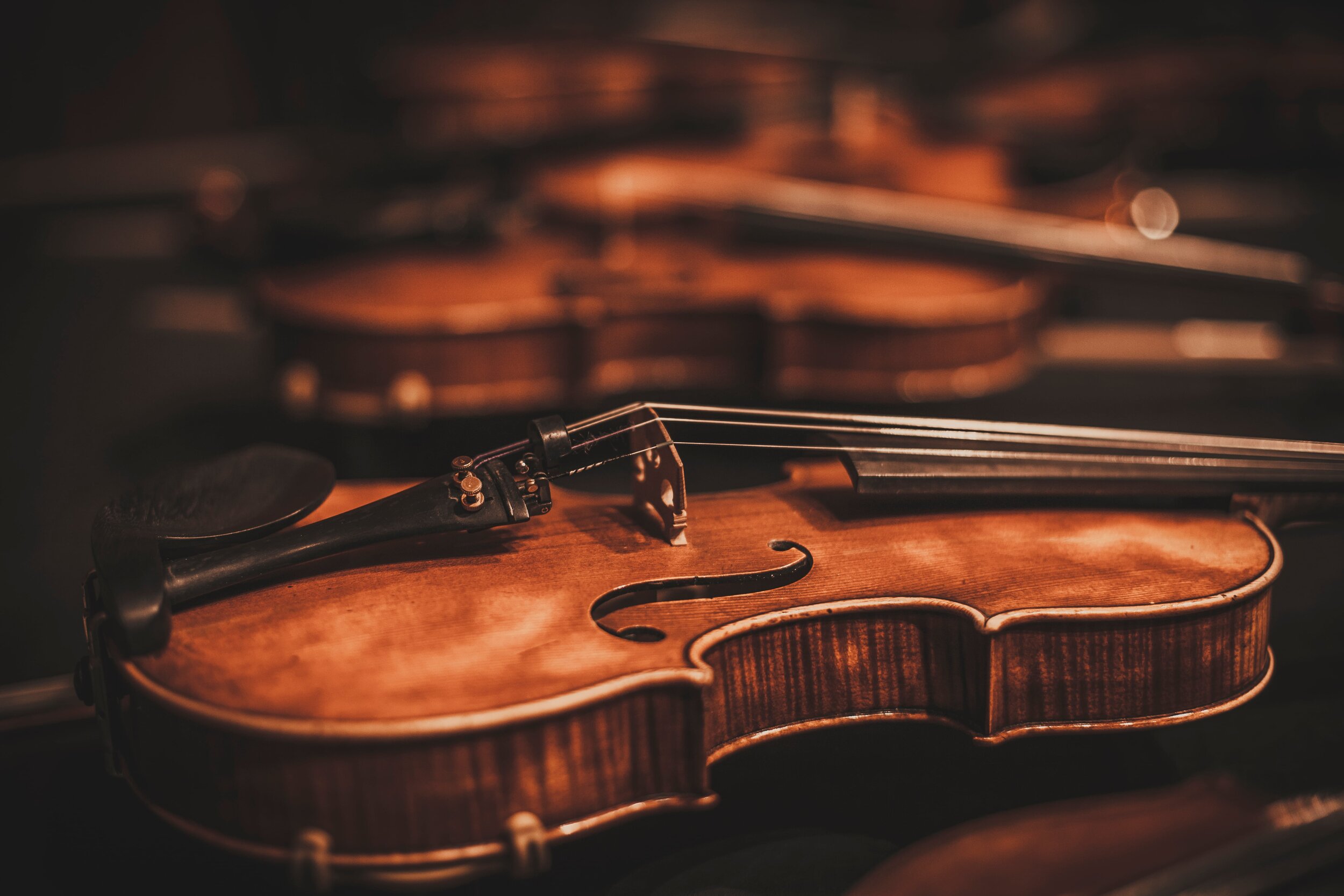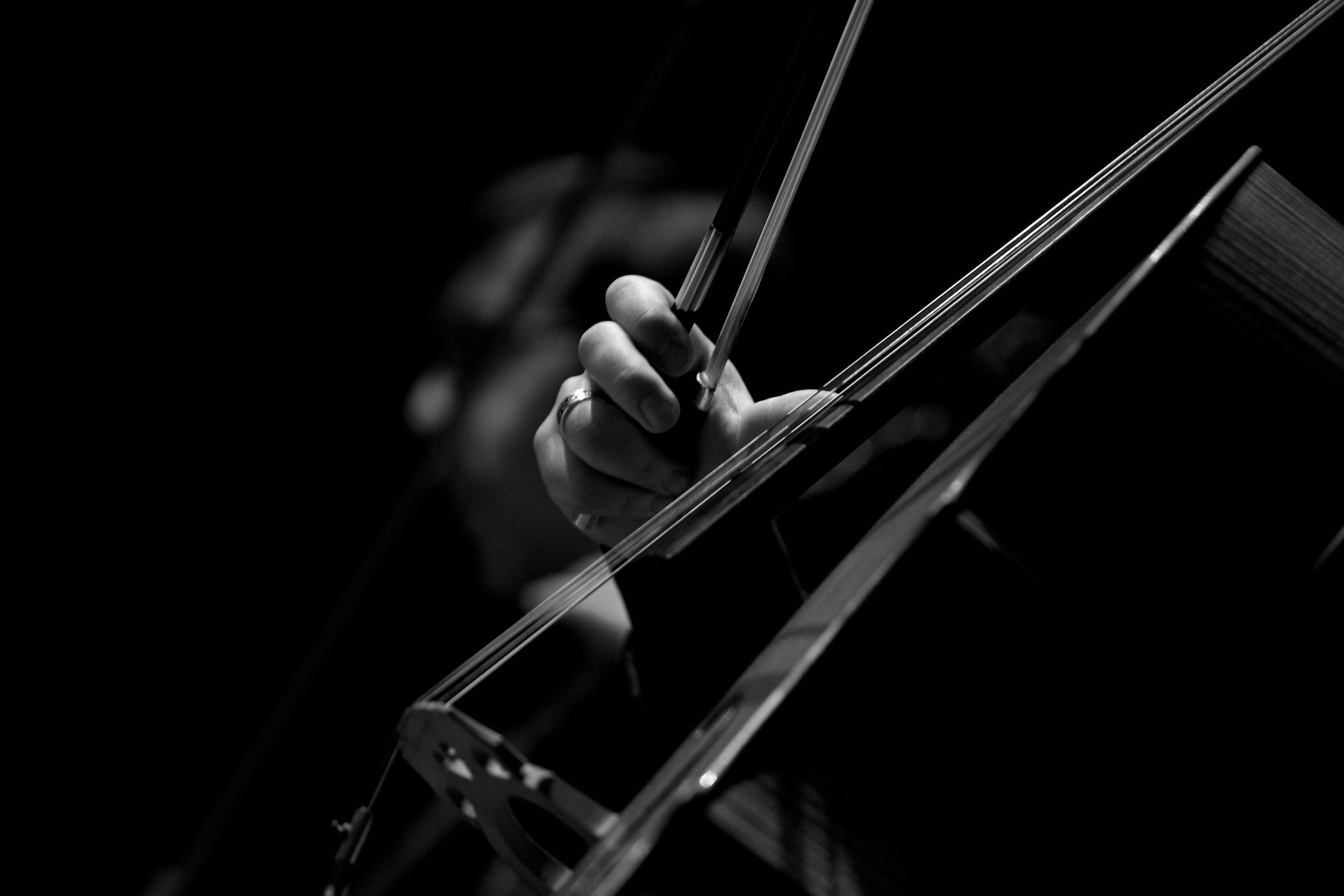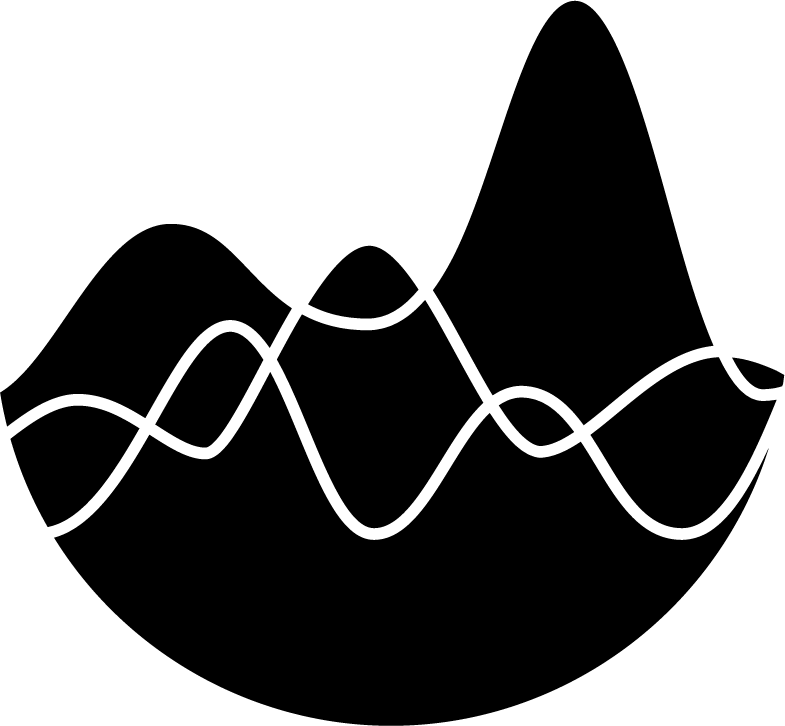Brass | Introduction
Brass instruments are a far more homogeneous group than woodwinds. All brass instruments produce their sound when lips are vibrated into a mouthpiece. Beyond the mouthpiece, the most important element in the structure of all brass instruments is a flaring bell at the end of the tubing, which not only amplifies the sound but also helps the higher partials to speak clearly and evenly. Brass instruments began their evolution as outdoor instruments, designed to be loud. Intimacy and delicacy can be achieved only by working against this disposition. To appreciate just how loud brass instruments can be, consider the following: It’s a common rule of orchestration thumb that it takes two horns to match the volume of one trumpet, but if that trumpet is playing relatively high and as loud as it can, an entire army of horns couldn’t match it. Still, when one horn is gathered with four woodwinds in a woodwind quintet, it takes all the skill the composer and hornist can muster to keep that instrument from overpowering the ensemble. Though quiet dynamic levels do not come naturally to brass, brass instruments can play very softly through a large part of their range, and this vast dynamic range makes modes of articulation and dynamic shaping available to brass that woodwinds and strings can only weakly imitate. With mutes, brass can play at the threshold of audibility. The dynamic compass of the brass section is matched only by the percussion section. The brass’s ability to project richly blended harmonic sonorities equals or surpasses the strings.
PITCH SELECTION IN BRASS INSTRUMENTS. Pitch selection in brass instruments is the simple product of only two factors:
1) The fundamental pitch of the instrument, determined by the length of the tubing of the instrument at the time the note is played, selected by valves or slide position.
2) The particular partial in the harmonic series of that fundamental, selected by the player’s embouchure.
Pitch Factor 1: Selection of the Fundamental. Until the middle of the 19th century, brass instruments (excepting trombones) were generally limited to the single fundamental designated by the “key” of the instrument. A trumpet in D, for example, could only play those notes available in the harmonic series of D. Modern brass instruments have valves and slides that give the player the option of choosing instantaneously from at least seven different fundamentals, selecting the “key” of their instrument for every note.
The valves and slides of brass instruments operate on inverse principles from the functioning of the keys on woodwind instruments. Woodwind keys open and close tone holes drilled in the instrument, effectively shortening its length and raising the pitch. Brass valves (or slides) generally add tubing to the instrument, extending its length and creating lower fundamentals. When playing a brass instrument, “pressing the right button” hardly guarantees playing the right note. Each “button” — a valve combination or slide position — merely provides a harmonic series on which anywhere from 6 to 16 notes can be played.
Only seven fundamentals are necessary to make available a complete chromatic scale in the octave above the fundamental. The fundamental is set by the seven positions of the trombone slide or by three keys of valved instruments, used in various combinations. The trombone slide adds length to the tubing by extending the “tube-within-a-tube,” while valve instruments use pistons or rotary valves to channel the air through extra units of tubing when they are depressed. On all valved brass instruments,
Valve 1: Lowers the pitch a major 2nd.
Valve 2: Lowers the pitch a minor 2nd.
Valve 3: Lowers the pitch a minor 3rd.
By combining the three valves in different ways, it is possible to lower the fundamental of the harmonic series as much as a tritone. The chart below shows how the seven trombone slide positions correspond to valve combinations, and how this successive addition of tubing is used to play a chromatic scale:
* Although trombones and tubas are notated at pitch, their open fundamental may be B♭, F, C, or E♭.
Sidebar: The Inherent Dysfunction of Valves: Arithmetical vs. Geometrical
The combining of valves to create intervals is not quite a perfect system. Tube lengths are added together to lower the pitch a certain interval, but intervals are proportional, not absolute. The amount of tube length needed for the third valve to lower any given fundamental a minor 3rd is not a consistent length but a percentage of the length of the prevailing fundamental. (The ratio that creates a minor 3rd is 6:5.) As a compromise, the length of the third valve is correct only when used in conjunction with the second valve. It’s too long when used by itself (so it will sound flat) and too short when used with the first valve (it must be “lipped down” — see below) and much too short when all three are used (a tuning slide is necessary).
Pitch Factor 2: Selection of the Partial Once the fundamental has been set, players use their embouchure to select a partial from that fundamental’s harmonic series to play the desired pitch. For example, here are the pitches theoretically available for each of the tenor trombone’s slide positions and the B♭ trumpet’s valve combinations: (Horn and tuba mirror these.)
In practice, the fundamental itself, called a pedal tone, is not used in normal trumpet writing, and the pedal tones of a tenor trombone are rarely used below 3rd position. Trumpets and trombones rarely play above the 10th partial, and the 7th and 11th partials are nearly a quarter-tone flat. When read from top to bottom, the chart demonstrates that there is a tritone of pitches available for each partial; note that the tritone spans made available on the 2nd and 3rd partials connect to form an octave chromatic scale. As the partials get higher and closer together, it becomes possible to play a given pitch in an increasing number of positions or valve combinations. For example, notice how B♭4 can be played on the trombone as the 8th partial in first position, the 9th partial in third position, the 10th partial in fifth position, and the adjusted 11th partial in seventh position.
The design of individual brass instruments and the mouthpieces employed tend to favor the playing of the particular segment of the harmonic series used in the regular tessitura of each instrument. As noted above, pedal tones are easier to play on the trombone than on the trumpet and are easier still on the bass trombone than on the tenor trombone. A modern trumpet responds most comfortably to the 3rd through 8th partials, while the core of the horn range is the 4th through 12th partials. The “original instrument” Baroque trumpet in C is twice as long as a modern C trumpet and was designed to project very high partials: without the benefit of valves, the Baroque trumpet can play a scale formed by the 8th through 16th partials (in conjunction with lip adjustments to finesse the out-of-tune partials).
The vibration speed of the player’s lips, controlled by the tension of the embouchure (which is, in turn, greatly influenced by the size and shape of the mouthpiece) favors a particular tessitura of the pitch spectrum, regardless of the length of the tubing. One common misconception concerning brass instruments is the assumption that the length of the instrument is the principal factor in determining its range possibilities.
It seems reasonable to expect that, since flute players can generally play an octave higher on the piccolo (a half-sized flute), trumpet players should similarly have no problem playing an octave higher on the piccolo trumpet (a half-sized trumpet). In reality, however, this is not the case. While high notes are more secure on a piccolo trumpet, the actual range is extended upward only about a 3rd.
It might also seem logical to assume that, since tenor trombone players can comfortably play the fundamental B♭1 in first position, extending the slide to the length of the E1 fundamental would make that note just as playable. But pedal tones on the tenor trombone become less and less secure as the slide extends.
One more example: Since bass trombone players are more comfortable with lower pedal tones, one might assume that the bass trombone is longer than the tenor, but this is not the case: disregarding a possible extra trigger not involved in this example, bass trombones are exactly the same length as tenor trombones. The bore and, more significantly, the mouthpiece cup size make the bass trombone more low-note friendly by promoting a slower vibration of the lips.
Regardless of the size of the instrument, the player’s lips must create the pitch by vibrating at the correct frequency in response to the airstream. Brass players spend most of their practice time coordinating their ears and embouchures in the range of their chosen instrument. Since the lips are also capable of (and responsible for) a wide latitude of intonation possibilities once a partial is found and sounded (e.g., some 3rd valve notes must be “lipped down”), coordination between the ear and the lips has to be highly developed. Brass players must hear the note before playing and produce the precise embouchure-to-airstream balance in order to enter cold on a high note. Because of this, playing a passage with many large leaps is substantially more difficult on brass than on other instruments.
PITCH INFLECTION.
Vibrato: In addition to defining the pitch (that is, selecting the appropriate partial) and adjusting the intonation (“lipping” up or down), brass players’ lips are also generally responsible for vibrato, and some kinds of trills and glissandos. American classical brass players use vibrato sparingly, occasionally adding a touch to a lyric line. Some players employ the diaphragm or jaw to execute vibrato, or create lip vibrato with a slight shake of the hand holding the instrument. Trombones may use slide vibrato.
Trills: Brass trills are of two types: lip trills and valve trills.
- Lip trills: Generally smoother but can only be performed in registers where partials are a whole-step or half-step apart. A tremolo over larger spaced partials is termed a “shake” and usually entails moving the jaw and the instrument itself to amplify the lip trill.
- Valve trills: Involve a rapid fluttering of the 2nd valve (for half-step trills) or 1st valve (for whole-step trills). Half-step valve trills work well anywhere on valved brass, but whole-step valve trills can be a problem in regions where partials are close — the lips may independently shift to another partial closer in pitch.
Glissandos: Glissandos on brass instruments are executed three different ways.
- Half-Valve: “Half-valve” glisses result from the unstable condition of the tubing created when valves are held in a midway position. The confusion of the air column prevents the lips from snapping into focus, allowing the lips to move the pitch freely around the instrument; the price for this freedom is paid in tone quality. Confusion of the air column can also be created by moving the valves so rapidly that stability cannot be established, resulting in the same kind of lip freedom as “half-valving.”
- Harmonic Gliss: The harmonic gliss is very simply a fast legato arpeggiation of the harmonic series by the lips; the fundamental (valve or slide position) stays immobile. Obviously, harmonic glisses are more effectively executed in ranges where partials are close together.
- Slide Gliss: The slide gliss is most conspicuous on the trombone with its tritone spanning slide, but other brass instruments have slides, too — tuning slides and valve slides, which can be employed to create small but beautifully effective glissandos. Even a slide gliss of a half step can be effective.
- Pitch Bend: A half-step pitch bend is readily executed on all brass instruments, and a bend of a whole step downward ispossible in ranges where the partials are more than a 3rd apart.
Adding length to the tubing has negligible audible impact on the quality of the sound, even though the air is diverted through various twists and turns of tubing. The difference between the timbre of a C trumpet in open position and the timbre with all its valves depressed (making it an F♯ trumpet) is in no way comparable to the difference in timbre between a flute and an alto flute. Nor does timbre change significantly as a brass player moves to a different partial. The use of higher partials, which create harmonics in string instruments and timbre-specific register shifts in woodwinds, is a basic pitch selection operation in brass playing: the use of “harmonics” as a color device cannot be applied to brass. This means that registers on brass instruments cannot be neatly divided by breaks from one partial range to another, with the exception of pedal tones (fundamentals), which may be considered a register unto themselves. Above pedal tones, the registers described for brass instruments refer to general regions without specific pitch boundaries.
There are three factors that create the different timbres of the various families of the brass section:
- the bore of the instrument;
- the mouthpiece;
- the bell construction, which may be modified by muting.
Bore: The concept of bore in wind instrument construction was introduced on the clarinet family page. The tubing of all brass instruments has some segments that are cylindrical and some segments that are conical. Valve tubing, for example, is always cylindrical, and the bell is obviously conical. Horns and tubas have proportionally more conical tubing making their sound darker and richer than the more cylindrical trumpets and trombones. The diameter of the bore also contributes to the quality of the sound: the horn is narrowly conical, while the tuba is broadly conical. Consequently, the horn is brighter and higher-partial friendly, while the tuba is fatter and fundamental friendly.
Mouthpieces: Mouthpieces come in various shapes and sizes. The horn mouthpiece is funnel shaped, but all the others have some kind of cup. Shallow cups will make the sound of the instrument more brilliant, and make higher partials easier to play. Deeper cups create a heavier tone facilitating lower partials. There are many slight variables in mouthpiece size and shape within families. Players often will choose from an assortment of mouthpieces, selecting one that is likely to provide the sound needed for a specific ensemble or style.
Bells: The bells of brass instruments are so visually attractive one might think that their purpose is ornamental, but they play a decisive role in the acoustics of these instruments. Unlike woodwind instruments, brass instruments have no tone holes from which air escapes, forcing all of the air to come out of the bell. Bell shape and direction influence every note that is played. The smaller bells of the trumpets and trombones provide a more focused, directional sound; these instruments are usually played with bells facing the audience. The large flare of the horn bell and the broad opening of the tuba bell produce sounds that are less directional. Since horn bells usually face the rear of the hall, and the bells of the tuba family face upward, these instruments have a more dispersed, less “present” and penetrating sound than trumpets and trombones. Since the horn is always played with the player’s right hand in the bell, its characteristic tone quality is slightly covered.
Most of the sound modifications heard in brass instruments have to do with some manner of bell manipulation. Particularly in trumpets and trombones, simply changing the direction in which the bell is pointed can make a significant difference in the sound, greatly influenced, of course, by the acoustics of the hall. Trumpets and trombones may be directed to play “into the stand,” significantly diminishing the brilliance and power of the sound. Trumpets and trombones may also be asked to play with “bells up,” which is striking visually as well as aurally. Horns are also frequently directed to play “bells up,” but horn players must change position while still keeping the hand in the bell.
MUTES: Brass mutes serve two functions:
- Modify timbre;
- Soften dynamics.
Although all brass mutes diminish the loudness of the instruments to varying degrees, the timbral effect of the different colors they make available is at least as important to the orchestrator. Perhaps because the dynamic range is lowered with mutes, the variations in color created by playing different dynamics while muted are more impressive than on open instruments: playing f through a given mute will produce a very distinctive timbre.
Brass mutes run a spectrum from the exquisitely engineered and crafted, to the homemade, to the “use whatever can be stuffed in the bell.” Even such a universally understood mute type as the trumpet straight mute includes a variety of mute designs and materials that will produce audible differences in the sound. A great deal of the craftsmanship of mute-making is devoted to designing the mute so it will not create intonation problems for the player, but even the highest quality mute will generally require some intonation adjustment.
Hand Muting: The simplest muting device for brass instruments (with the exception of the tuba family, whose bells are too big and inaccessible) is the player’s free hand. For a trumpet or trombone, this would be the left hand, and while it is far less efficient than a well-designed mute, it does have a decided impact on the volume and quality of the sound, and it is always available at arm’s length. It may lower the pitch of the instrument slightly and be used to create muting/tone-bending combinations. In the case of the horn, the right hand is normally positioned in the bell to assist with intonation and (to a lesser degree) tone color. When inserted further into the bell (called “stopping” the instrument) it produces a distinctly different, buzzy muted sound. The hand can also be used to cover and uncover the open or muted bell. The term for this technique, “wah-wah,” represents the alternation (or gradual modulation) between two vowel sounds “oo” and “ah.” The “oo” sound is simulated by a closed (muted) bell, and an “ah” is created with an open bell. Closed (or stopped) sounds are indicated by a “+” over (always over!) the note, and open by “O” (this character should be rounder than the fingering 0). Gradual modulation (as opposed to discrete muted and open notes) is indicated by an arrow between these symbols.
Tip: In computer notation the “O” may be the same symbol as a harmonic but using a point size 25% larger.
Mute types: Mutes are not standard equipment with brass instruments, and as the instruments get larger, it becomes less and less likely that players will have a particular mute with them without prior notification. While straight mutes, available for all brass instruments, are fairly common in orchestral scores, other kinds of mutes owe their existence primarily to jazz players and are almost exclusively designed for trumpets or trombones. If a player has one mute, it will be a straight mute.
In the score, it is only necessary to indicate the mute type at the beginning of the muted passage (e.g., “cup muted,”) and to indicate “open” at the beginning of the passage after the mute has been removed. Redundant indication of the prevailing mute situation in parentheses is recommended for the beginning of left-hand score and part pages. In the part, it is advisable to give some warning ahead of time in addition to these indications (e.g., “to cup mute,” and “remove mute.”)
A. Mutes which allow a portion of the sound to escape around the mute:
- Straight mute (all brass)
- Cup mute (trumpet and trombone)
- Bucket mute (trumpet and trombone)
- Plunger (trumpet and trombone)
- Hat (trumpet and trombone)
- Cloth over bell (trumpet and trombone)
B. Mutes which seal off the bell, forcing the air to pass through the mute:
- Harmon mute (trumpet and trombone)
- Practice mute, or “Whispa mute” (trumpet, rare for trombone)
- Solotone mute (trumpet and trombone)
- Stopping mute, also known as “transposing mute” (horn only)
CATEGORY A.
Straight mutes: By far the most common of all brass mutes, are available for all instruments, and they are the only mutes that may be used with equal effectiveness at loud or soft dynamics. They reduce the normal richness of the tone, replacing it with a reedy edginess that is particularly insistent at f dynamic levels. A straight mute is designed to fit into the bell with just enough space to force the sound to escape around it; this space is bridged by three or four strips of cork, which also serve to hold the mute in place. Straight mutes are generally conical and constructed of fiberboard, fiberglass, wood, plastic, or metal. It is not common to specify the material of the straight mute; it is more effective to describe the sound color desired in words such as “soft,” “dark” or “bright.”
Cup mutes: Do not force the air to exit the bell with as much pressure as straight mutes, but catch the sound in the cup after it has passed through the bell. The result is a darker, mellower tone that blends well with woodwinds or strings. Cup mutes are most common in jazz ensembles, but are becoming more widespread in the orchestral world.
Bucket mutes: Like cup mutes, capture the sound after it has left the bell, but in this case, the sound is smothered in a bucket of cotton. The result is a sound that is truly “muted,” sounding a little like an echo, and thoroughly stripped of its brilliance. The bucket is linked to the bell with three or four metal straps. The bucket mute is so effective that one wonders why it is not more commonly used.
Plungers: Are exactly what the name implies: a plumber’s helper with the handle removed. Modifications like adding a strap or making it look less like something that came out of a toilet do little to improve on its beautiful efficiency and effectiveness. The plunger is held over the bell with the left hand. In closed position, it functions to create a distinctive muted sound, covered and hollow. However, since it can easily be manipulated to various degrees of openness, it is almost always used to create “wah-wah” effects.
Hats: just like plungers, are real-world objects used to mute brass instruments; as with plungers, idealized versions of hat-like mutes exist but are not appreciably more effective than the real thing. While plungers fit within the circumference of the bell, hats fit over the bell. Because of this, or possibly because of the softer material, hats provide a warmer, smoother sound than plungers. Felt or canvas bags or stuffed handkerchiefs similarly provide an undistorted muted
sound, close to the natural color of the instrument. These “found object” mutes provide intriguing possibilities, although the actual sound quality is somewhat indeterminate, and intonation and response through various ranges can be problematic.CATEGORY B.
Harmon mutes, generally made of metal, have an additional part: a stem, with a mini-bell at its end, can be placed in a variety of positions, or may be completely removed leaving only the larger mute. This mute can be used in three basic ways:
- “Stem removed.” With the stem removed, all of the sound must escape through the small stem hole, creating an extremely stuffy sound (the sound that made Miles Davis famous). It is recommended that the ambiguous term “stem out” be avoided.
- “Stem in.” The stem, when pushed all the way in, acts as an efficient amplifier and provides the loudest version of the characteristic sound of this mute, bright and metallic sounding.
- “Stem extended.” Extending the stem limits its effectiveness, making the sound stuffier, but still not as backed up as when the stem is removed.
The relatively small opening of the stem bell makes it particularly responsive to hand muting, accounting for this mute’s alternate name: the “wah-wah” mute. All trumpet players have harmon mutes; the trombone version is less common but phenomenally effective. A horn version exists, but is rare.
Solotone mutes share the dual structure of the harmon, but both chambers have more of a cone shape, so that the sound forced into the first is expelled through a small opening through the projecting cardboard second chamber. The resulting sound is very weak in lower frequencies, making it penetrating but disembodied at the same time.
Practice mutes are the quietest mutes available. (Composers have been using the brand name “Wispa mute” to designate a particular kind of practice mute, but Wispa mutes are no longer considered the most effective practice mutes.) Practice mutes force all the sound through the absorbent material of the mute, exiting through small holes at the end. Playing at the threshold of audibility is possible on this mute, and playing loudly is impossible. It takes a very determined f to match an oboe’s mp. It is difficult to control very high notes with a practice mute.
“Brassy.” One other common timbre modification in brass is the “brassy” tone — harsh, and stridently brilliant, only possible at dynamic levels of f and above. This is simply indicated by writing the word “brassy” in addition to the dynamic marking. Though most common with open instruments, it may be used in conjunction with straight mutes.
BREATHING AND TONGUING CONSIDERATIONS FOR BRASS.
Air supply and lip endurance. Brass instruments generally require more air than woodwinds. Here are some guidelines to keep in mind:
- Low notes use more air than high notes. A tuba player needs to take breaths approximately twice as often as a trumpet or horn player.
- f passages will require twice as many breaths (per time unit) as p passages.
- Producing a brass tone and frequently changing tension to adjust pitch is hard work for the lips. Not surprisingly, high notes are more fatiguing than lower ones. Periods of rest are far more essential for brass than for other instruments!
Tonguing. Brass instruments are, like the flute family and unlike other woodwinds, free from reed concerns. This allows them great flexibility in tonguing. Since brass instruments are generally less agile than the woodwinds when it comes to moving pitches rapidly or disjunctly, a great deal of rhythmic energy in brass writing comes from repeated notes. These are reliably effective when single tongued or, at faster speeds, double or triple tongued. Fast tonguing can also add clarity to moving lines, but it must be remembered that tonguing will not allow the lips to change pitches any faster. Idiomatic fast brass music frequently features a mixture of slurred small intervals, tongued repeated notes, and an occasional skip.
The variation from a sharp tonguing attack (“toh”) to a more legato tonguing (“doh”) is more pronounced on brass than on woodwinds. The crispness of the tonguing is generally left to the player’s interpretive discretion.







